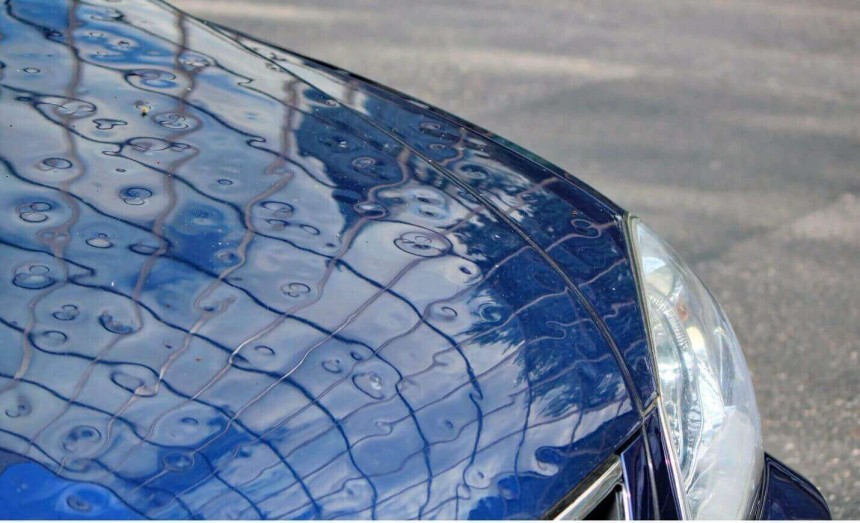
Got Hailstorm Damage To Your Cars?
If you have hailstorm damage to cars, there are certain steps you can take to get it repaired. You can file a claim to report hailstorm damage to your insurance company or car lender.
Hailstorms can cause significant damage to vehicles, leaving car owners frustrated and unsure of how to proceed. Whether you have a few dents or extensive damage, understanding the steps to take after a hailstorm can help you mitigate costs and restore your car to its original condition. This article provides a comprehensive guide on what to do if your car has been damaged by hail.
Understanding Hail DamageHail damage to cars typically manifests as dents, dings, and scratches. The severity of the damage often depends on the size of the hailstones and the duration of the storm. Hail can vary in size from small pellets to golf-ball-sized stones or even larger, each causing different levels of impact.
Signs of Hail Damage- Dents and Dings: The most common sign of hail damage is visible dents on the car's body. These may vary in size and can appear on the hood, roof, and trunk.
- Paint Damage: Hail can chip or scratch the paint, leading to rust if left untreated. Look for areas where the paint has been compromised.
- Windshield Damage: Hail can also crack or chip the windshield, which poses safety hazards and can lead to expensive repairs if not addressed promptly.
- Body Panel Issues: In severe cases, hail can cause body panels to warp or bend, leading to alignment issues and compromising the vehicle's structural integrity.
- Assess the Damage: After the storm passes, examine your vehicle for damage. Take photos from different angles to document the extent of the damage for insurance purposes.
- Check for Leaks: Inspect the interior for any leaks, especially if hail damaged the windshield or roof. This can lead to mold and further damage if not addressed quickly.
- Move Your Vehicle: If possible, park your car in a garage or under a carport to protect it from additional weather elements.
- Contact Your Insurance Company: Notify your insurance provider as soon as possible to report the damage. They will guide you through the claims process and may recommend local repair shops.
When filing a claim for hail damage, keep the following in mind:
- Policy Coverage: Review your policy to understand your coverage. Comprehensive insurance usually covers hail damage, while liability insurance does not.
- Document Everything: Submit your photos and any other documentation (e.g., repair estimates) to your insurance company. This will help expedite your claim.
- Get Multiple Estimates: Consider obtaining repair estimates from different auto body shops. This can help ensure you're getting a fair assessment of the repair costs.
- Follow Up: Stay in contact with your insurance adjuster to keep the claim process moving. They may need additional information or documentation.
Once you've assessed the damage and filed your insurance claim, it’s time to explore repair options. Here are the most common methods for repairing hail damage:
1. Paintless Dent Repair (PDR)What It Is: PDR is a popular method for fixing minor dents without affecting the vehicle's paint. Technicians use specialized tools to massage the metal back into its original shape.
Pros:
- Cost-effective
- Preserves original paint
- Faster turnaround time
Cons:
- Not suitable for severe damage
- Limited availability in some areas
What It Is: For more extensive damage, traditional auto body repair may be necessary. This involves sanding, filling, and repainting the affected areas.
Pros:
- Effective for severe dents and scratches
- Restores the car’s appearance
Cons:
- More expensive
- Longer repair time
What It Is: In cases where hail has caused extensive damage, entire body panels may need to be replaced. This is often necessary for parts like the hood, roof, or trunk.
Pros:
- Ensures structural integrity
- May improve resale value
Cons:
- High cost
- Potential for mismatched paint
If the damage is minor and you’re feeling handy, there are a few DIY methods you can try:
- Hair Dryer Method: Heat the dent with a hair dryer, then apply aluminum foil over the area and rub dry ice over it. The rapid temperature change may cause the metal to pop back into shape.
- Boiling Water Method: For plastic parts, pour boiling water over the dented area, then push from behind to pop the dent out. Reheat the area if necessary.
- Plunger Method: Use a clean plunger to try to pull the dent out. Ensure the area is wet to create a better seal.
Note: DIY methods may not always be effective and can risk further damage. Always proceed with caution.
Preventing Future Hail DamageWhile it’s impossible to prevent hailstorms, you can take steps to protect your vehicle:
- Invest in a Car Cover: A durable car cover can provide an additional layer of protection during a storm.
- Park in a Garage: Whenever possible, park your car in a garage or covered area to shield it from hail.
- Use Hail Protection Products: Some companies offer specialized hail protection products that can be used to cover vehicles during storms.
- Stay Informed: Keep an eye on weather forecasts and alerts. If severe weather is predicted, take precautions ahead of time.
Dealing with hailstorm damage to your car can be overwhelming, but knowing the steps to take can make the process smoother. From assessing the damage to filing an insurance claim and exploring repair options, being informed can save you time, money, and stress. Additionally, taking proactive measures to protect your vehicle can help mitigate future risks. With the right approach, you can restore your car and get back on the road in no time.





